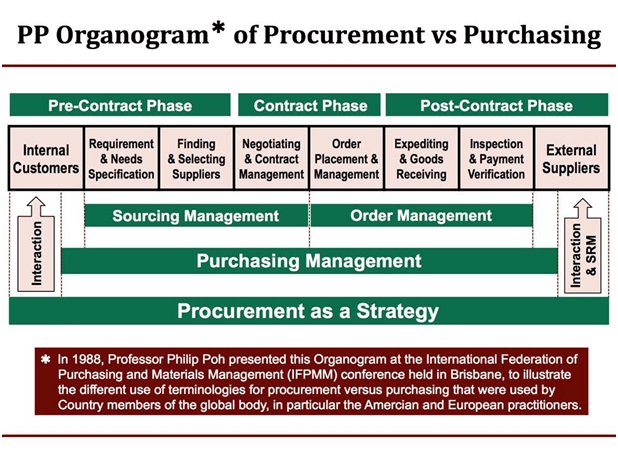Today, companies are increasingly recognizing the importance of sustainable procurement. According to a global study, 2017 Sustainable Procurement Barometer, conducted by Eco Vadis and HEC, 97% of the surveyed supply chain professionals from a total of 120 companies regard sustainable procurement as highly important. Global think tanks and analysts expect upcoming trends towards companies being pressured to take responsibility in addressing environmental and social issues.
Being aware of the importance and trends is one thing, however, actually taking actions towards sustainability is a step that companies should be undertaking if they have not already begun to do so after being aware. Procurement plays a key role in the business activities of the company. Aligning sustainability with the company’s business goals and purpose is important for sustainable procurement to be practical.
Table of Contents
Engage and Communicate with Relevant Stakeholders
Alignment occurs when all relevant stakeholders are clear about the company’s purpose, and decisions are made in accordance with it. This involves first defining clearly the actual purpose of the company itself. For example, a specialty chemical company’s purpose would be to produce innovative advanced materials to meet the constantly changing needs of the market. This purpose would then involve sustainability that is being increasingly in demand globally.
Next, the company has to engage relevant people at all levels to communicate the company’s purpose so that they know the right direction to move towards. As illustrated in the PP Organogram below, procurement involves a host of processes, where people involved in each of the processes have to understand the purpose of alignment. This allows them to have a clearer sense of what to do at any given time to achieve the company’s sustainability goals.
In the interaction with external suppliers in the post-contract phase, it will be in the company’s interest as well to be able to leverage its power to influence suppliers’ and other external stakeholders’ decisions or behaviors towards sustainability. This allows them to better understand and align with the organization’s sustainability goals and practices.

Authority for Procurement Department
One of the common setbacks is that procurement executives within the company do not possess the authority to influence key sustainability decisions for internal customers within the company. Between procurement and internal customers, success may be measured differently from each other where it can be difficult to make the case to prioritize environmental initiatives.
To achieve alignment, there needs to be a proper budget and resource allocation in the company. Procurement department should not be limited by resources and authority to drive collaboration between sustainability and financial teams, growing the business while reducing environmental impacts.
Clear Metrics to Measure Sustainability Performance
Sustainability performance should be measured to evaluate the progress and effectiveness of current strategies. In addition to the traditional bottom line that measures profits, the environmental and social impact of procurement actions should be incorporated into the picture to account for the full cost of business. This framework is commonly referred to as the Triple Bottom Line.
Both internal and external stakeholders will be looking to gauge concretely with clear metrics. Internally, companies will be able to better allocate budget and resources for alignment, prioritizing which actions will generate the most benefit to the company and its value chains partners, such as suppliers and customers. Externally, concrete results will have an impact on branding and image where customers are increasingly conscious about sustainability.
Natura, a cosmetics company, has accounted for environmental costs by working with suppliers to put a price on externalities like greenhouse gas emissions, water use, and waste generation. This approach allows Natura to select suppliers based on both pricing and environmental impact with tangible indicators, improving the economic and environmental performance of its supply chain while also generating cost savings.
The full content is only visible to SIPMM members
Already a member? Please Login to continue reading.
References
Clinton, Nancy. (2017). “Sustainable Procurement – Becoming More Widespread and More Important”. Retrieved from http://spendmatters.com/uk/sustainable-procurement-becoming-important-widespread/, accessed 17/06/2019.
Foong, MeeKeat Mickie. (2019). “Key Considerations for Sustainable Procurement”. Retrieved from SIPMM: https://publication.sipmm.edu.sg/key-considerations-sustainable-procurement, accessed 10/06/2019.
Kenton, Will. (2019). “Triple Bottom Line (TBL)”. Retrieved from https://www.investopedia.com/terms/t/triple-bottom-line.asp, accessed 10/06/2019.
Khoo, Chai Luan. (2018). “Overcoming Key Challenges of Sustainable Procurement Practices”. Retrieved from SIPMM: https://publication.sipmm.edu.sg/overcoming-key-challenges-sustainable-procurement-practices, accessed 10/06/2019.
Kinsey, Anne. (2019). “Business Alignment Definition”. Retrieved from https://bizfluent.com/info-8385599-business-alignment-definition.html, accessed 23/06/2019.
Poh, Philip. (1988), “Defining and Clarifying the use of Terminologies”, International Federation of Purchasing and Materials Management Conference, Brisbane.
Steer, Andrew. (2013).”Aligning sustainability and profit: what are the barriers?”. Retrieved from https://www.theguardian.com/sustainable-business/aligning-sustainability-profit-barriers-companies, accessed 24/06/2019.
Sustain Ability. (2019).”Citizen Power – Sustainability Trends 2019”. Retrieved from https://trends.sustainability.com/citizen-power/, accessed 24/06/2019.
Volkman, Sarah. (2017). “Sustainability: Alignment of CSR with business strategy is key”. Retrieved from https://www.globalreporting.org/information/news-and-press-center/Pages/SustainAbility-Alignment-of-CSR-with-business-strategy-is-key.aspx, accessed 24/06/2019
Zafar, Salman. (2019). “Trends in Waste-to-Energy Industry”. Retrieved from https://www.bioenergyconsult.com/trends-in-waste-to-energy-industry/, accessed 24/06/2019.

